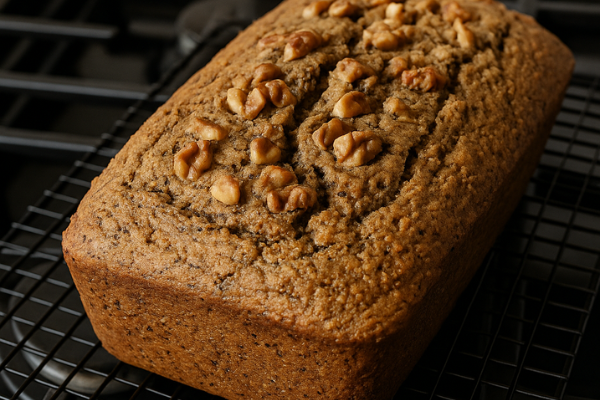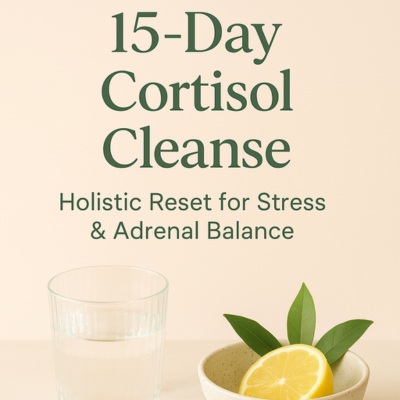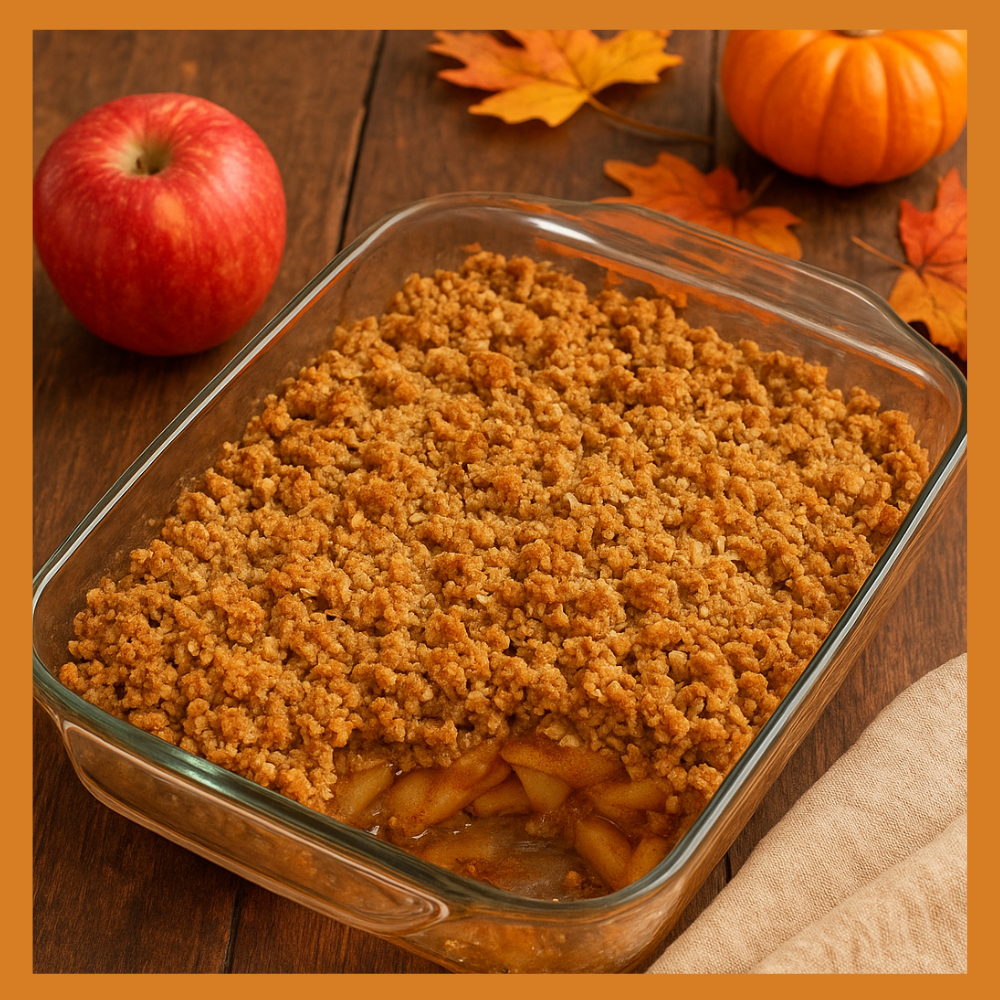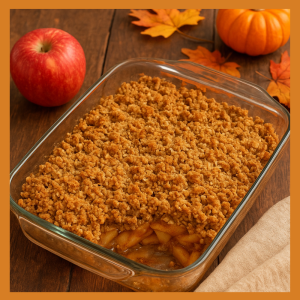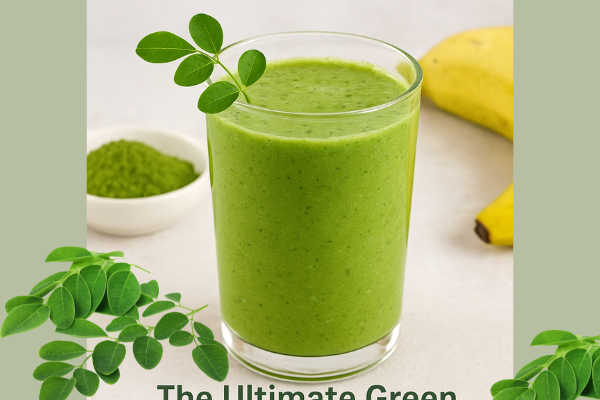There’s something magical about the aroma of warm apples, cinnamon, and oats baking in the oven. It fills the entire house with the smell of comfort. Apple crumble is a classic dessert that many of us grew up enjoying — but today, I’m sharing my plant-based twist on this timeless favorite: Vegan Apple Crumble.
This version is 100% dairy-free, egg-free, and loaded with wholesome ingredients. It’s the perfect cozy dessert for fall, the holidays, or any day you’re craving something sweet and comforting.
🍎 Why You’ll Love This Vegan Apple Crumble
-
✅ Completely plant-based — no butter, no eggs, no dairy
-
🌿 Made with simple pantry ingredients
-
🍯 Naturally sweetened with maple syrup and coconut sugar
-
💪 High in fiber from oats and apples
-
🧡 Comforting, cozy, and easy to make
Whether you’re hosting a family gathering, enjoying a quiet weekend, or looking for a healthier dessert option, this recipe delivers on flavor without the guilt.
📜 A Little History: Apple Crumble
Apple crumble originated in Britain during World War II as a simpler alternative to pies. Since ingredients like butter and flour were rationed, home bakers began topping their baked apples with a crumbly mixture instead of a full pastry crust.
Fast forward to today, and crumble has become a beloved comfort dessert around the world. And the best part? It’s one of the easiest desserts to make vegan without sacrificing flavor or texture.
🍏 Vegan Apple Crumble Recipe (Easy, Cozy & Delicious)
 vicky schulte
vicky schulte
🪴 Why This Vegan Apple Crumble Is HealthierUnlike traditional crumble recipes made with butter and refined sugar, this version uses:Coconut oil instead of butter — giving healthy fats and a light flavor.Maple syrup and coconut sugar — less processed sweeteners that bring a rich caramel taste.Oats and almond flour — which add fiber, protein, and nutrients.This dessert satisfies your sweet tooth but also provides some nutritional value.
Prep Time 20 minutes mins
Cook Time 40 minutes mins
- 6 medium Granny Smith or Honey-crisp apples
- 2 tbsp Fresh Lemon Juice
- 1 tsp Cinnamon
- 1/4 tsp Nutmeg
- 3 tbsp Pure Maple Syrup
- 1 tbsp Cornstarch
- For Crumble Topping
- 1 cup Rolled Oats
- 3/4 cup Almond Flour (or regular all-purpose flour)
- 1/2 cup Coconut Sugar (or brown sugar)
- 1/2 tsp Cinnamon
- 1/4 tsp Salt
- 5 tbsp Melted Vegan Butter
- 1 tsp Vanilla Extract
Optional add-ins
- 1/2 cup Chopped Walnuts or Pecans
Preheat the OvenPreheat your oven to 350°F (175°C). Lightly grease a 9×9-inch baking dish or a medium casserole dish. Prepare the Apple FillingPeel and core the apples, then slice them into thin wedges.In a large bowl, toss the apples with lemon juice, cinnamon, nutmeg, maple syrup, and cornstarch. Mix well until the apples are evenly coated.🍎 Pro Tip: Using a mix of tart and sweet apples adds more flavor depth to the crumble.Spread the apple mixture evenly in the prepared baking dish. Make the Crumble ToppingIn another bowl, combine oats, almond flour, coconut sugar, cinnamon, and salt. Pour in the melted coconut oil and vanilla. Stir until the mixture becomes crumbly and sticks together slightly when pressed. Assemble the CrumbleSprinkle the topping evenly over the apple mixture. Don’t pack it down too tightly — a light, crumbly texture is best. BakePlace the dish in the preheated oven and bake for 35–40 minutes, or until the apples are soft and bubbly and the topping is golden brown.🔥 If the topping browns too quickly, cover loosely with foil halfway through baking. Cool and ServeLet the crumble cool for about 10–15 minutes before serving. This allows the juices to thicken and the flavors to develop. 🍨 Serving SuggestionsServe warm with a scoop of vegan vanilla ice cream 🍦Top with coconut whipped cream for extra creaminessDrizzle with warm maple syrup for added sweetnessSprinkle with chopped nuts for extra crunchThis dessert also tastes amazing at room temperature or chilled from the fridge the next day. 🥄 Storage TipsRefrigerator: Store leftovers in an airtight container for up to 5 days.Freezer: Freeze portions in a freezer-safe container for up to 3 months. Reheat in the oven at 325°F (165°C) until warm.Reheating: Pop it in the oven or air fryer to crisp up the topping again.
Keyword amazining vegan desserts, Autumn Baking Recipes Easy, fall desserts vegan, vegan apple crumble
🧠 Helpful Tips for Perfect Apple Crumble
-
Choose the right apples — Granny Smith gives a tart contrast to the sweet crumble, while Honeycrisp adds juiciness.
-
Don’t overmix the topping — A crumbly texture is key for that perfect golden crunch.
-
Thicken the filling — The cornstarch helps the apple juices thicken as they bake, creating a gooey apple filling.
-
Customize your sweetness — Taste the apple mixture before baking. If your apples are extra tart, add a little more maple syrup.
🧡 Variations
-
🍏 Gluten-Free Apple Crumble: Use certified gluten-free oats and almond flour.
-
🍎 Apple Berry Crumble: Add 1 cup of fresh or frozen blueberries or raspberries to the apple mixture.
-
🍯 Apple-Pear Crumble: Mix apples with pears for a juicy twist.
-
🥧 Mini Crumbles: Bake in ramekins for individual servings — perfect for parties or portion control.
🪴 Why This Vegan Apple Crumble Is Healthier
Unlike traditional crumble recipes made with butter and refined sugar, this version uses:
-
Coconut oil instead of butter — giving healthy fats and a light flavor.
-
Maple syrup and coconut sugar — less processed sweeteners that bring a rich caramel taste.
-
Oats and almond flour — which add fiber, protein, and nutrients.
This dessert satisfies your sweet tooth but also provides some nutritional value.
🍽️ Nutrition Facts (per serving, 8 servings)
| Nutrient |
Amount |
| Calories |
270 kcal |
| Carbohydrates |
39 g |
| Protein |
3 g |
| Fat |
13 g |
| Fiber |
4 g |
| Sugar |
22 g |
| Sodium |
65 mg |
Note: Nutrition values are approximate and may vary based on exact ingredients used.
🧁 Frequently Asked Questions
❓ Can I use a different sweetener?
Yes! You can substitute maple syrup with agave nectar, date syrup, or coconut nectar. Coconut sugar can be replaced with brown sugar.
❓ What kind of apples are best?
Granny Smith is a top choice for its tartness, but Honeycrisp, Fuji, or Braeburn also work beautifully. A mix of two apple varieties gives the best flavor.
❓ Can I make this ahead of time?
Absolutely. Assemble the crumble ahead, cover, and refrigerate for up to 24 hours. When ready to bake, simply pop it in the oven.
❓ Can I make this oil-free?
Yes — use unsweetened applesauce instead of coconut oil. The texture will be a bit softer but still delicious.
🍁 Cozy Fall Dessert Inspiration
This Vegan Apple Crumble is perfect for:
Pair it with a vegan chai latte, hot apple cider, or pumpkin spice coffee for the ultimate autumn experience.
Some other fall recipes you may enjoy:
Oatmeal Bake with Cinnamon- Walnut-Apple
The Best Homemade Pumpkin Bagels
Walnut Chocolate Chip Pumpkin Cookies

